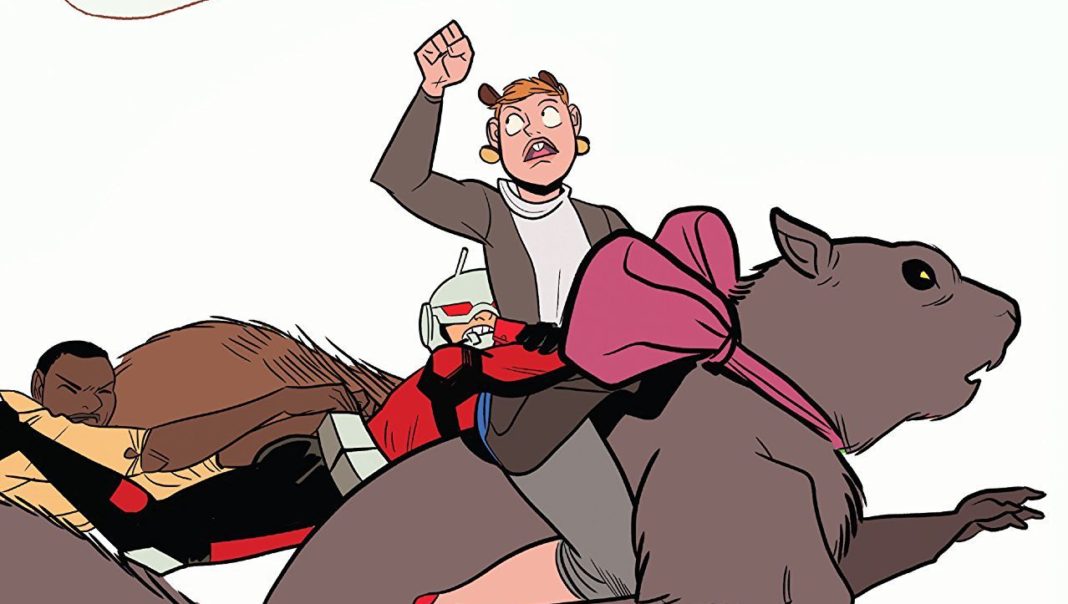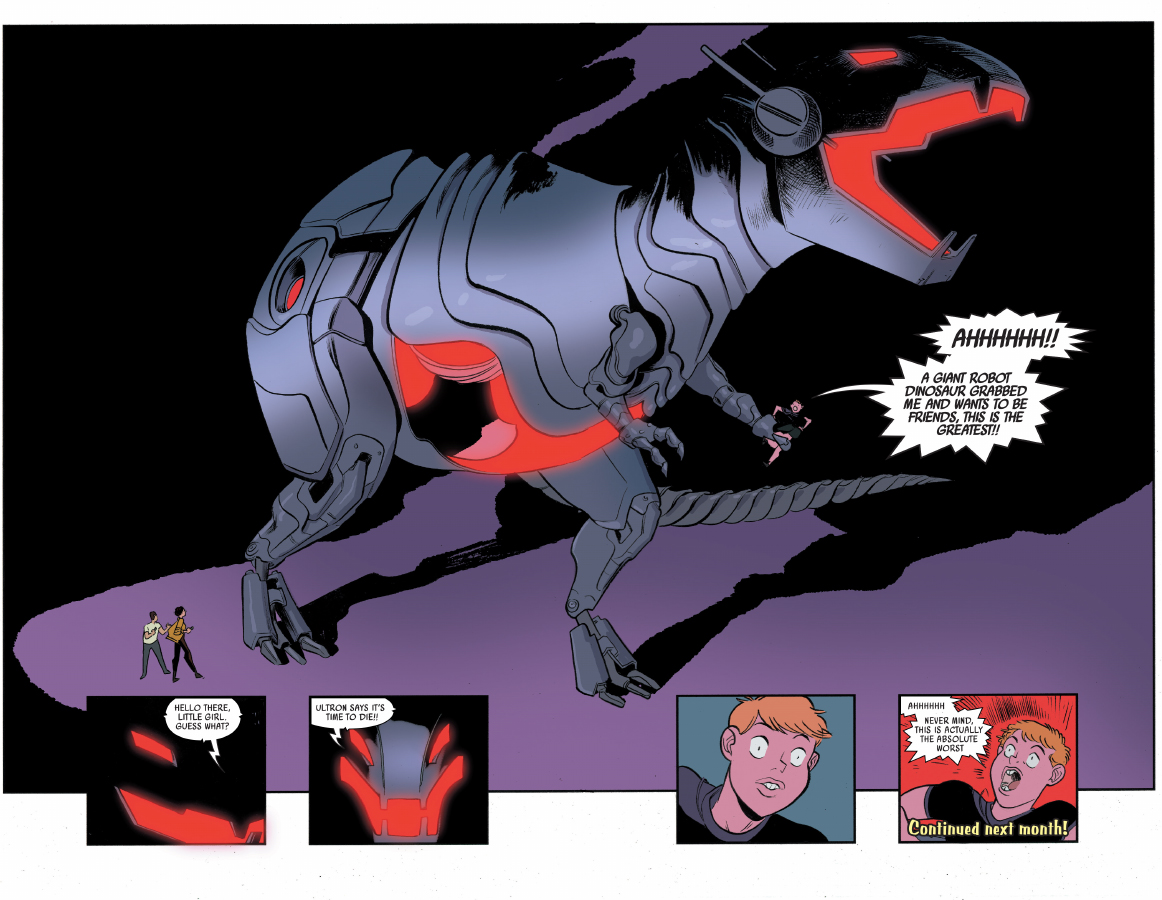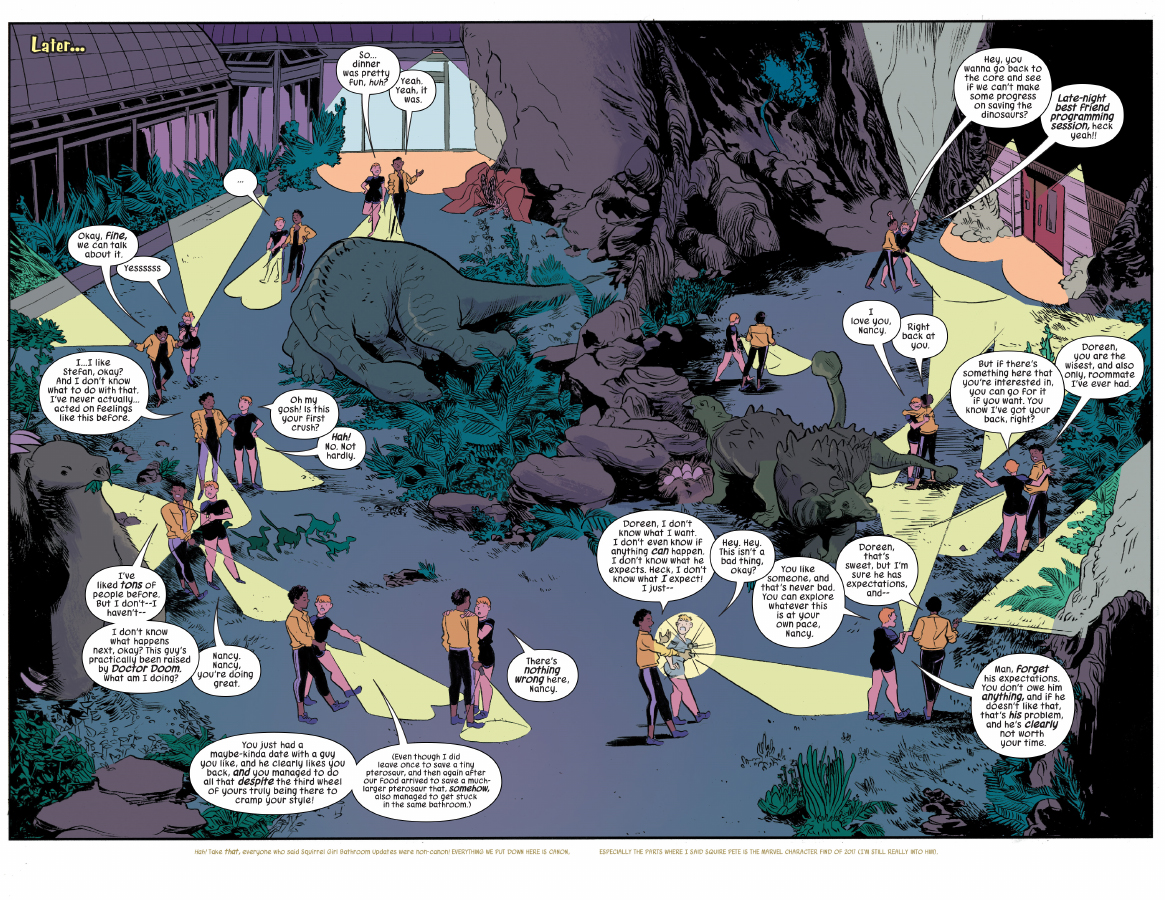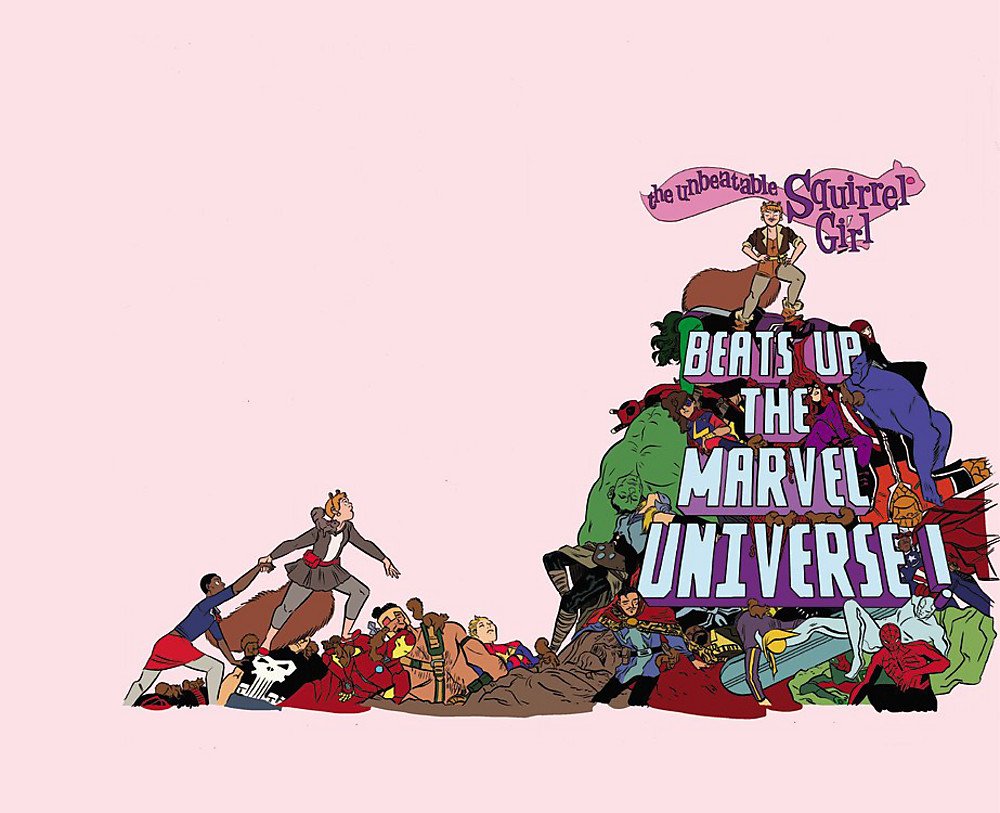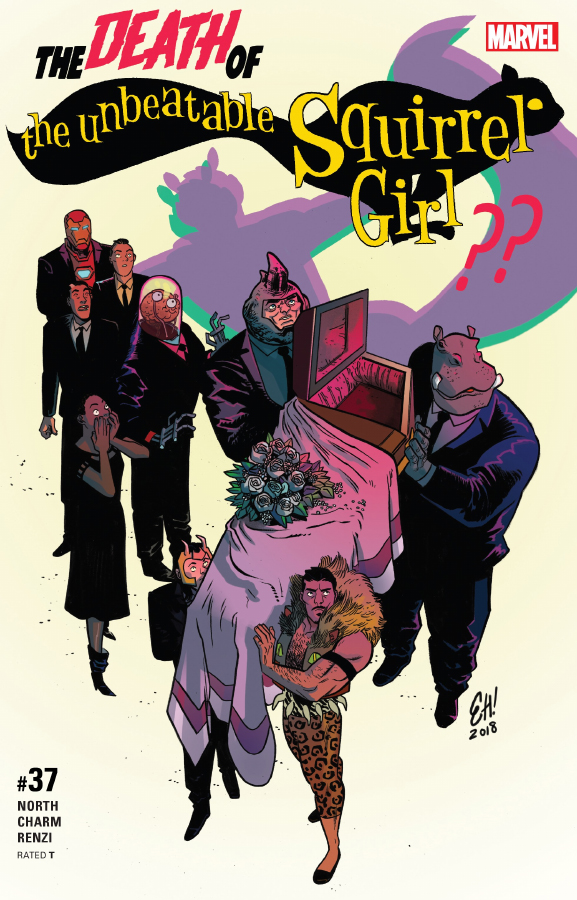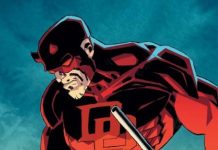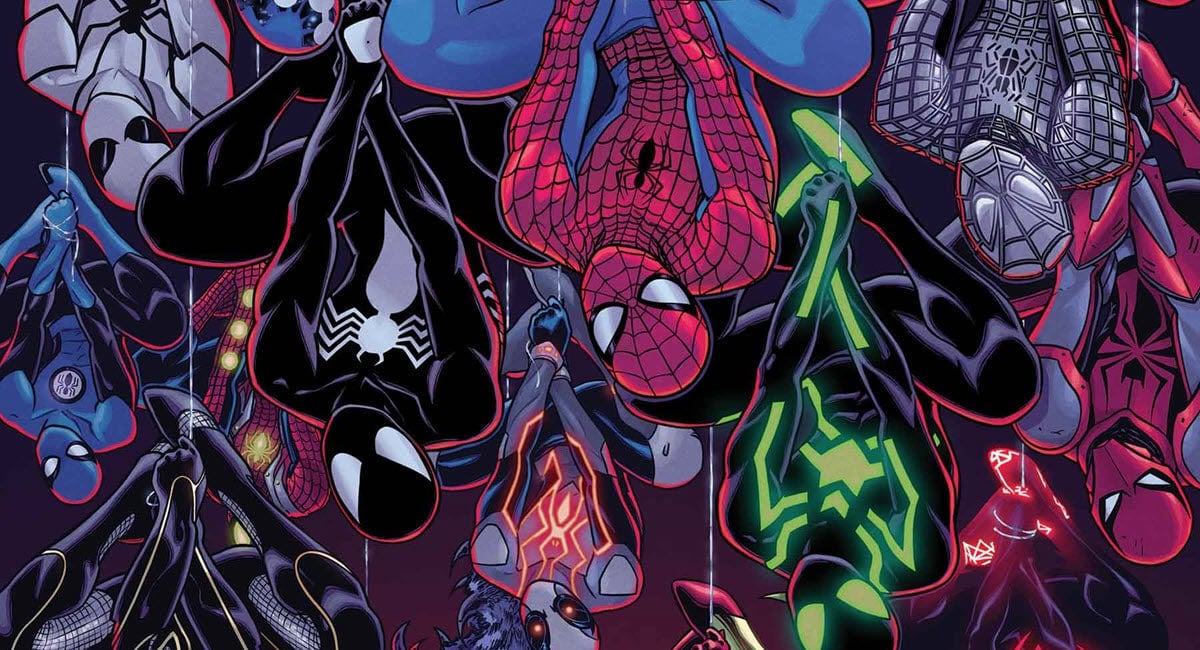By Sara Century
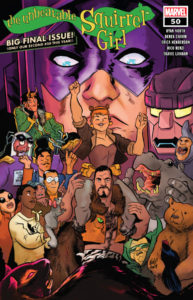
The Unbeatable Squirrel Girl is often referred to as a “surprise success,” but that only tells part of the story. There was clearly a demand for books exhibiting heroes that didn’t fit the standard format for quite some time before the series ever hit the stands, and the quality of the book was anything but an accident. Focusing on a younger audience and selling much higher quantities at book fairs than at local comic shops, Squirrel Girl helped the industry at large reimagine a business model that would include a wider berth of fans. Perhaps the success of The Unbeatable Squirrel Girl is not such a surprise at all, but rather an inevitability of the best kind.
WHO IS SQUIRREL GIRL?
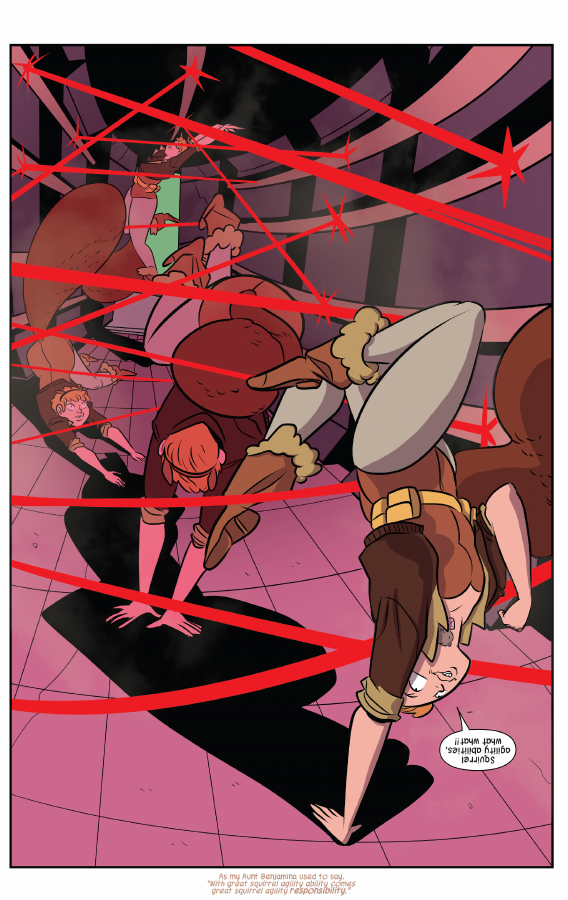
The history of Squirrel Girl before the Ryan North and Erica Henderson series began can be summed up in a few sentences. Making her first appearance in 1977, created by artist Steve Ditko and writer Will Murray, Squirrel Girl came into being because Murray sought to bring a more light-hearted superhero to Marvel comics. Based on a former girlfriend of Murray’s with a penchant for caring for squirrels and other woodland creatures, the first appearance of Squirrel Girl was fun, but didn’t exactly open the door to a lot of new opportunities for the character.
She spent most of her existence either in limbo, as a babysitter for Luke Cage and Jessica Jones, or as a Great Lake Avenger — a superhero team notorious for its lack of effectual crime-fighting. Alongside the GLA, Doreen’s powers of proportional squirrel strength and intrinsic ability to communicate with squirrels were truly allowed to shine for the first time.
Squirrel Girl’s ongoing series saw her attending university and studying computer science while going toe-to-toe with some of the worst baddies of the Marvel Universe. Though luck played a major role in many of her victories, so did her natural intelligence and compassion. Puzzle-solving and creative solutions quickly became the stock and trade of the book, and a major part of why it stands out. Her friendships with villains, heroes, classmates, and squirrels served as icing on the cake as we watched her navigate complicated interpersonal relationships with morality and reason.
THE CREATIVE TEAM
North and Henderson worked subsequently on Archie Comics’ Jughead series prior to taking on The Unbeatable Squirrel Girl. As such, the creative dynamic between them seems to have reached synthesis well before the first issue of Squirrel Girl hit the stands. North’s humor and Henderson’s versatile style combined to create a deeply humanized take on Doreen Green.
The consistency of Henderson’s art shows through in how often she steps outside of her comfort zone. Moments like the Choose Your Own Adventure story or the Where’s Waldo Iron Man cover required her to take these established genre gimmicks of years gone by and to work them into Marvel comics through sheer stylism. Maintaining her own singular artistic voice throughout a series that visited numerous pre-existing tropes is no small feat, and it is in this that Henderson’s art truly shines. Bringing in an illustrator who would be all-ages friendly was obviously important to the entire creative team, but so few would have been able to create a visual language for Doreen’s evolution the way that Henderson did.
When Henderson left the series with #31, follow-up artist Derek Charm continued the general tone of the art by working through a similar style. Still, he brought a voice all his own to the series with memorable takes on the Squirrel Scouts and the rest of Doreen’s supporting cast. Establishing a unique style while seamlessly merging with the iconic prior artist is impressive in and of itself, but Charm’s expressiveness and inventive angles provided an entirely new lens to view the story through. Both artists merged perfectly with North’s scripts, and the end result is nothing short of a modern day epic.
HOW BIZARRE, HOW BIZARRE
The experimental format of the book is a huge part of what made it work. In a series that was often dismissed as lacking maturity and seriousness, a surprising amount of ingenuity was apparent even from the start. Ongoing notes in the margins summing up the pages content seemed to serve as a self-aware attempt at establishing a psychic connection between reader and protagonist.
The understanding of tropes and the utilization of them never impeded on the unique message of the book. The sense of humor did not derail the progression of a story that would be empowering to young readers. The ridiculousness inherent to the concept was never placed under undue stress by the creative team. That the book was targeted at younger audiences did nothing to diminish its readability for adults. By the end of the book, Doreen had undergone a journey that established her as one of the most interesting and genuine characters in comics, period.
EMPOWERMENT THROUGH OPTIMISM
Importantly, if this series had stuck to the initial premise of an inexperienced and comparatively “useless” young woman in over her head, it would have likely died a painful death in its early issues. Highlighting Doreen’s extreme competence is what made the series great, and played a big part in why it’s been so impactful for young readers. To whit, North recently commented on the elimination of the fourth-wall breaking jokes as the series progressed, citing that he had noticed criticism that the specific humor trope had served to undersell and devalue Squirrel Girl’s true strength and power. Taking this feedback to heart and striving for a more genuine and realistic character only made for a better book.
One of the most noticeable and intentional elements of Doreen’s character is her consistent prioritizing of empathy and understanding over violence. In superhero comics, this is quite possibly her most revolutionary trait, as she regularly focuses on attempts at compromise rather than resorting to physical fights. This need to understand led to surprising character developments, not just for her but for several longstanding Marvel villains. Notably, Kraven the Hunter, who had been consistently reduced to his one single gimmick of being “the greatest hunter alive,” took on a life of his own as he and Doreen developed a surprising friendship. Even characters like Doctor Doom and Galactus seemed just a little bit easier to show compassion towards in Doreen’s presence. Far from the one-note morality of many superhero stories, these villains were given space to present their case and be heard in the pages of Squirrel Girl.
Yet her physicality was a driving force of the series as well, and some stories, such as the OGN Squirrel Girl Beats Up The Marvel Universe, prioritized her fighting prowess. These stories were more sparse, but they served to show us that Doreen’s empathy was due to a genuine desire to understand rather than a physical weakness.
A WORLD WITHOUT SQUIRREL GIRL
It’s hard to say for sure where Doreen will go from here, but suffice to say that the North/Henderson series is bound to be the definitive take on the character for some time to come. Humanizing Squirrel Girl and giving her a serious and realistic undertone even in her most comical moments while establishing her genuine strengths helped to take a previously dismissed device and instead give the world a fully dimensional character that readers genuinely relate to and care about. It also showed the industry another side of the comics market, which led for an increased push for all-ages books. Getting more comics into the hands of younger readers while reestablishing a long-forgotten character as an important part of the Marvel Universe was no small feat, and for these reasons and many more, the end of Squirrel Girl is bittersweet, but full of hope for a better industry overall.


